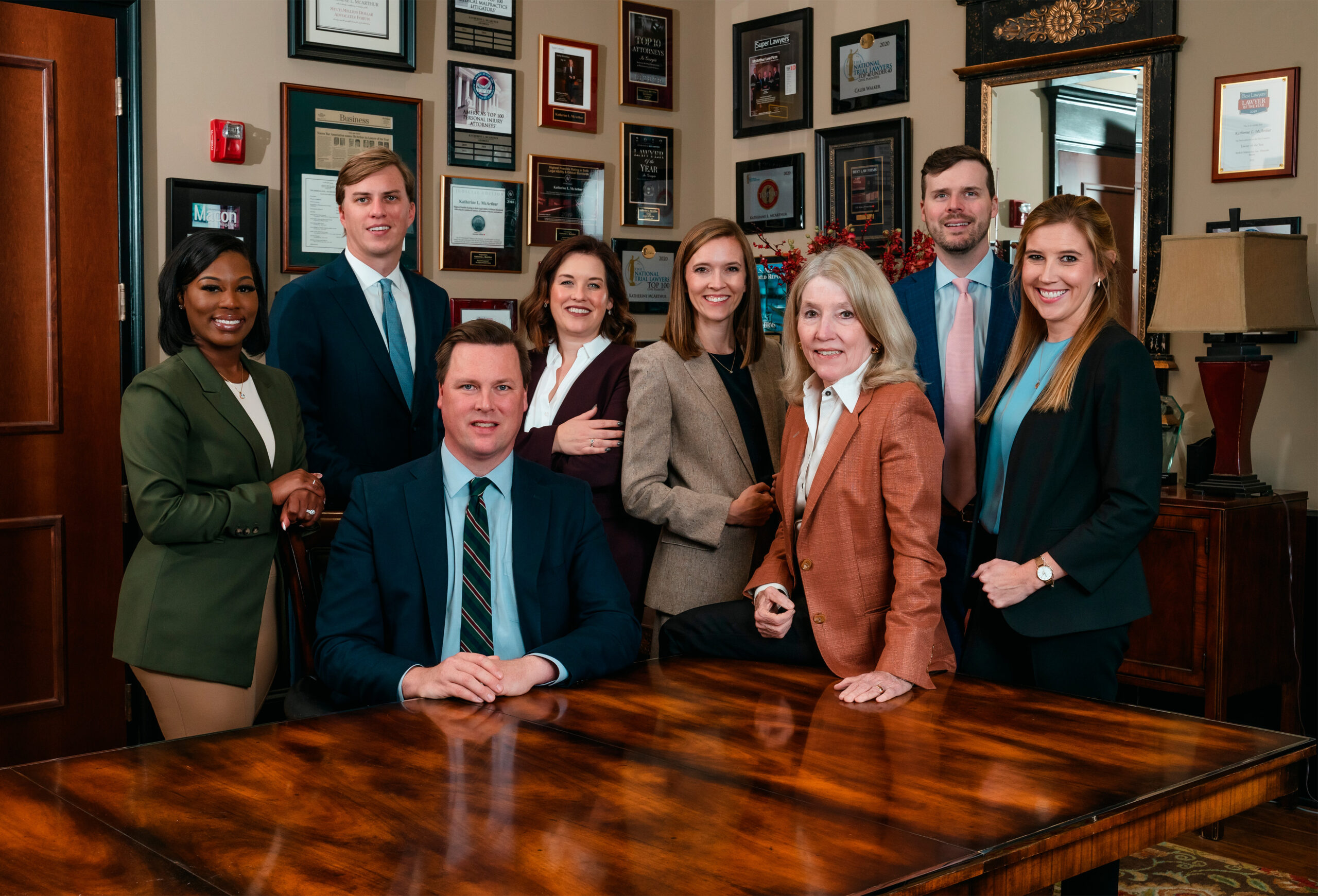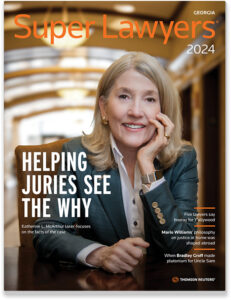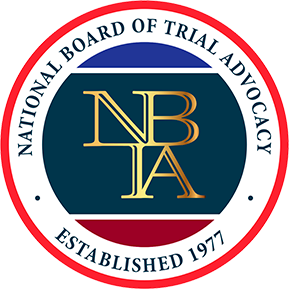The sound of a T-bone crash is unforgettable, the screech of tires, the crunch of metal, and the sudden, jarring silence that follows. A single reckless action at an intersection can leave victims trapped, seriously injured, and facing a long and difficult recovery. These side-impact collisions rank among the deadliest on Georgia’s highways and city streets, often caused by drivers who run red lights or speed through busy crossings.
Georgia T-Bone Accident Lawyer
In such moments, compassion alone isn’t enough, victims need strength and advocacy on their side. The attorneys at McArthur Law Firm are dedicated to standing up against negligent drivers and powerful insurance companies that attempt to shift blame or downplay victims’ suffering.
In this piece, the firm outlines what every crash victim should understand about Georgia T-bone accidents, how these collisions occur, who may be held liable, what legal options exist, the types of compensation that may be pursued, and how a committed T-bone accident lawyer can fight to secure the justice and recovery victims deserve.
McArthur Law Firm serves the entire state of Georgia, including: Fulton County, Bibb County and Fulton County, as well as Clayton County, Cherokee County, Forsyth County, and surrounding communities. For more information about the McArthur Law Firm or to set up a free consultation to learn what we may be able to do to help you with your T-bone accident and/or injury case, give us a call at one of our offices in Georgia or fill out our online contact form.
- Atlanta Office: 404-565-1621
- Macon Office: 478-238-6600
- Warner Robins: 478-551-9901
Overview of T-Bone Accidents in Georgia
- Types of T-Bone Accidents in Georgia
- Common Injuries Caused by a T-Bone Accident
- Where T-Bone Accidents Often Happen in Atlanta and Macon
- Who May Be Held Liable After a Georgia T-Bone Accident
- The Role of a Georgia T-Bone Accident Lawyer
- Frequently Asked Questions About T-Bone Accidents
- Resources
Types of T-Bone Accidents in Georgia
Left-Turn T-Bone Accidents — These accidents occur when a driver turning left at an intersection crosses into the path of a vehicle traveling straight through the light. They often happen when a driver misjudges the speed of an oncoming car or tries to beat a yellow light. The resulting impact strikes the side of the vehicle, placing occupants at significant risk since side panels provide limited protection. Such collisions are particularly dangerous on Georgia’s congested roads, where high speeds and multiple lanes reduce visibility and reaction time.
Red-Light and Stop-Sign T-Bone Accidents — When a driver runs a red light or disregards a stop sign, the consequences can be catastrophic. The at-fault driver collides with a vehicle lawfully crossing the intersection. This type of T-bone accident frequently occurs at high-traffic intersections in cities like Atlanta and Macon, where hurried or distracted drivers push through yellow or red lights. The sudden, high-speed impact often results in severe vehicle damage and serious injuries.
Intersection Miscommunication T-Bone Accidents — These crashes happen when two drivers misinterpret each other’s intentions or misunderstand who has the right of way. One motorist might assume the other is yielding, while the other expects to proceed. A momentary lapse in judgment can lead to a side-impact collision at the center of an intersection. This type of confusion is common at poorly marked intersections or during heavy traffic when drivers grow impatient.
Multi-Vehicle and Secondary Impact T-Bone Accidents — In some cases, a vehicle hit from behind or the side is pushed into another car, triggering a secondary T-bone collision. These chain-reaction crashes often occur on highways or busy cross streets. Even if a vehicle is not the initial point of impact, the sideways force from another car being shoved into it can cause severe injuries. These accidents are complex to investigate because determining which driver’s actions initiated the sequence can be challenging.
Commercial Vehicle and Truck T-Bone Accidents — Side-impact collisions involving large trucks or commercial vehicles are among the most destructive. Due to a truck’s height and weight, the point of impact often aligns with the windows and doors of smaller cars, exposing occupants to life-threatening injuries even at moderate speeds. These cases typically involve multiple liable parties, such as the truck driver, the trucking company, and sometimes a cargo loader, making them legally intricate and demanding thorough investigation.
Common Injuries Caused by a T-Bone Accident
Broken Bones and Fractures — The sudden side impact in a T-bone collision can cause severe fractures in the legs, arms, pelvis, and ribs. Because the vehicle’s side panels absorb little of the impact, the body often bears the full force of the crash. These injuries frequently require surgical repair, extended physical therapy, and months of recovery before normal mobility can return.
Neck and Spine Injuries — The abrupt twisting motion caused by a side-impact crash can strain or damage the neck and spinal column. Victims commonly suffer from whiplash, herniated discs, or spinal cord injuries. In serious cases, these injuries may lead to chronic pain, nerve damage, or partial paralysis, often making it difficult to resume regular work or daily activities.
Head and Brain Trauma — During a T-bone impact, the head may strike the window, steering wheel, or side pillar, resulting in traumatic brain injuries. Even mild brain trauma can produce lingering symptoms such as headaches, memory problems, dizziness, and mood changes.
Internal Organ Damage — The force of a side collision can harm internal organs like the lungs, liver, or spleen—sometimes without visible external injuries. These conditions are particularly dangerous because internal bleeding or organ damage may not be immediately apparent.
Emotional and Psychological Effects — Beyond the physical harm, victims often experience significant emotional distress, including anxiety, nightmares, or post-traumatic stress disorder (PTSD). Emotional recovery can take much longer than physical healing.
Where T-Bone Accidents Often Happen in Atlanta and Macon
Atlanta Intersections — In Atlanta, T-bone crashes often happen where fast-moving traffic meets heavy congestion. Intersections like Peachtree Street and North Avenue, or areas near I-285 and I-75, see frequent side-impact collisions. Drivers rushing through yellow lights, distracted by phones, or impatient during rush hour increase the risk. The mix of commuters, tourists, and delivery vehicles makes Atlanta’s intersections some of the most dangerous in Georgia for T-bone accidents.
Downtown and Midtown Atlanta — Busy business districts with multiple turning lanes and pedestrians can create confusion over right-of-way. Collisions often occur when one driver assumes the other will yield. Poor visibility from tall buildings and large vehicles can also block the view of oncoming traffic, making a side-impact crash more likely.
Macon Hotspots — In Macon, high-traffic corridors like Eisenhower Parkway, Pio Nono Avenue, and Riverside Drive are frequent locations for T-bone accidents. These roads combine local traffic with through-drivers unfamiliar with the area, creating sudden stops and risky left turns. Many of these intersections also have short signal times, which can tempt drivers to speed through yellow lights.
Neighborhood and Commercial Areas — Around Macon’s shopping centers and Atlanta’s suburban neighborhoods, side-impact crashes often happen in parking lot exits and smaller intersections. Drivers pulling out of side streets or driveways without noticing oncoming traffic can cause severe T-bone impacts. Even at lower speeds, these accidents can lead to serious injuries.
When and Why They Happen — Most T-bone accidents in Atlanta and Macon occur during peak traffic hours, when drivers are distracted, tired, or trying to beat the light. Intersections with poor visibility, short signals, or heavy pedestrian crossings are especially dangerous.
Who May Be Held Liable After a Georgia T-Bone Accident
Negligent Drivers — In most T-bone collisions, another driver’s careless or reckless actions are the primary cause. Georgia law requires all motorists to obey traffic signals and yield the right-of-way when appropriate. Under O.C.G.A. § 40-6-20, drivers must stop when facing a red light or signal, while O.C.G.A. § 40-6-70 mandates that drivers turning left yield to oncoming traffic presenting an immediate hazard. When a driver runs a red light, fails to yield, or speeds through an intersection, that individual can be held liable for resulting injuries and losses. Evidence such as traffic camera footage, witness statements, and police reports often plays a key role in proving negligence.
Commercial Trucking Companies — In T-bone accidents involving large trucks or commercial vehicles, the trucking company may also bear legal responsibility under Georgia’s respondeat superior statute (O.C.G.A. § 51-2-2). This doctrine holds employers accountable for the actions of their employees while performing job-related duties. If a truck driver caused a crash by running a light, driving distracted, or violating hours-of-service rules, the employer could also be liable for negligent hiring, training, or supervision practices.
Vehicle Manufacturers — When a mechanical failure—such as defective brakes, a stuck accelerator, or malfunctioning airbags—causes a T-bone crash, the manufacturer may be held responsible under Georgia’s product liability law (O.C.G.A. § 51-1-11). This statute makes manufacturers liable for defects in design, manufacturing, or failure to warn that result in injury. An experienced T-bone accident attorney may work with engineers and safety experts to determine whether a defect contributed to the collision or aggravated the severity of the injuries.
Government Entities — In certain cases, a government agency may share fault if a poorly designed intersection, malfunctioning traffic signal, or unsafe roadway contributed to the crash. While O.C.G.A. § 36-33-1 generally grants cities and counties sovereign immunity, exceptions exist when local governments fail to maintain traffic controls or road conditions properly. Claims against government entities follow specific notice requirements and often have shorter filing deadlines than standard personal injury lawsuits.
Other Potentially Liable Parties — Depending on the circumstances, additional individuals or businesses could share responsibility. For instance, a road construction company that left confusing detour signs or a rideshare company enforcing unsafe driving policies might also be held liable. Georgia law allows injury victims to pursue claims against any party whose negligence—direct or indirect—contributed to the crash. Thorough investigation and evidence analysis are essential to identify all responsible parties and maximize recovery.
The Role of a Georgia T-Bone Accident Lawyer
Investigating a Georgia T-Bone Accident — The first step an attorney takes is to determine precisely how the side-impact collision occurred. This involves reviewing police and accident reports, collecting traffic camera footage, inspecting vehicle damage, and interviewing witnesses. Through this process, the lawyer identifies the cause of the crash and preserves vital evidence before it can be lost or altered.
Handling Insurance Claims — Insurance companies frequently attempt to minimize the extent of injuries or assign partial blame to both drivers. An attorney manages all communications and negotiations with insurance adjusters, ensuring that medical records, accident evidence, and repair estimates receive full consideration. Their objective is to secure the highest possible settlement allowed under Georgia law.
Filing a T-Bone Accident Lawsuit in Georgia — When settlement negotiations fail, the lawyer is prepared to take the case to court. They file the lawsuit, present detailed evidence, and utilize expert witnesses to explain how the side-impact crash happened. Typical claims include compensation for medical expenses, lost wages, pain and suffering, and other damages directly related to the collision.
Fighting for Compensation and Damages — Because T-bone accidents often result in catastrophic injuries, the attorney’s mission is to ensure that every loss—physical, emotional, and financial—is accounted for. Compensation may cover both economic damages (such as hospital bills, rehabilitation costs, and property repairs) and non-economic damages (such as emotional distress and loss of enjoyment of life). In cases involving reckless or intoxicated drivers, the attorney may also seek punitive damages under O.C.G.A. § 51-12-5.1 to punish egregious misconduct and deter future negligence.
Why Victims Need a Georgia T-Bone Accident Specialist — T-bone accident cases are far more complex than ordinary car wrecks. Establishing fault can require accident reconstruction, traffic signal analysis, and the identification of multiple liable parties. A Georgia T-bone accident lawyer possesses the specialized experience, technical insight, and determination necessary to confront insurance companies and negligent drivers, ensuring clients receive the justice and compensation they deserve.
Frequently Asked Questions About T-Bone Accidents
What should someone do right after a T-bone accident in Georgia?
The first step after a T-bone crash is to seek immediate medical attention, even if injuries seem minor. Then, call the police to report the accident and obtain an official record. It’s also important to collect contact and insurance information from everyone involved, take photos of the scene, and document vehicle damage and road conditions. Finally, contacting a Georgia T-bone accident lawyer as soon as possible helps protect legal rights and ensures that critical evidence is preserved.
How is fault typically determined in a Georgia side-impact (T-bone) accident?
Fault is generally established by determining which driver failed to yield or disobeyed traffic signals. Police reports, intersection surveillance footage, and witness statements are crucial in identifying negligent behavior. This evidence helps demonstrate which driver’s actions directly caused the T-bone collision and who should be held legally responsible.
How long does someone have to file a claim after a Georgia T-bone collision?
Under Georgia law, injury victims typically have two years from the date of the T-bone accident to file a personal injury claim or lawsuit. Missing this deadline can result in losing the right to recover compensation, so acting promptly is essential.
What types of damages can be recovered after a Georgia T-bone crash?
Victims may seek compensation for a variety of losses, including medical expenses, lost wages, property damage, pain and suffering, emotional distress, and future care needs. A Georgia T-bone accident lawyer can evaluate all potential damages and pursue the maximum recovery allowed by law.
Can a person still recover compensation if partially responsible for a Georgia T-bone accident?
Yes. Georgia follows a modified comparative fault system, which allows recovery of damages as long as the victim is less than 50% at fault. However, the total compensation will be reduced by the percentage of fault assigned to the injured party.
Should someone speak to the insurance company after a Georgia broadside (T-bone) collision?
It’s best to avoid giving detailed statements to insurance companies before consulting an attorney. Insurers often attempt to minimize payouts or shift blame. Having a Georgia T-bone accident lawyer communicate with the insurer ensures that the claim is accurately represented and fully valued.
What evidence is most important in a Georgia T-bone accident case?
Critical evidence includes photographs of the vehicles and crash scene, traffic signal timing data, black box or event recorder information, and witness statements. A Georgia T-bone accident lawyer uses this evidence to reconstruct the collision, prove negligence, and strengthen the client’s claim.
What makes T-bone accident claims different from other car accident cases in Georgia?
T-bone collisions differ because side panels offer minimal protection compared to front or rear impacts, leading to more serious injuries. Additionally, these cases often involve multiple vehicles or negligent parties, making a detailed legal investigation necessary to determine full liability.
When should someone contact a Georgia T-bone accident lawyer after a side-impact crash?
It’s crucial to contact a Georgia T-bone accident lawyer immediately following the collision. Prompt legal action helps preserve time-sensitive evidence, ensures accurate documentation of injuries and damages, and maximizes the potential for full and fair compensation.
Resources
Driver Mortality in Paired Side Impact Collisions Due to Incompatible Vehicle Types — This National Library of Medicine article presents a study on driver mortality in side-impact “T-bone” crashes between passenger cars and SUVs. It analyzes factors like vehicle weight, model year, driver age, seat belt use, and airbag deployment. The study finds that passenger car drivers face a higher risk of death compared to SUV drivers, highlighting issues of vehicle compatibility and crashworthiness in side-impact collisions.
Crash Mitigation Controller for Unavoidable T-Bone Collisions Using Reinforcement Learning — This Elsevier research article discusses a proposed crash mitigation controller for unavoidable T-bone collisions using reinforcement learning (RL). It explores how advanced control algorithms and drift mechanisms can minimize crash severity in extreme conditions.
Motor Vehicle Collisions — This StatPearls resource from the National Library of Medicine explains the mechanisms, types, and injury patterns of motor vehicle collisions. It discusses the physics of energy transfer during crashes, common injuries from different impact types, and trauma triage guidelines.
Hire a Personal Injury Lawyer for T-bone Accidents in Atlanta, Georgia
McArthur Law Firm serves the cities of Atlanta in Fulton County, Macon in Bibb County, Kathleen in Houston County, Peachtree Corners and Lawrenceville in Gwinnett County, Marietta and Smyrna in Cobb County, Stonecrest, Brookhaven and Dunwoody in Dekalb County, Albany in Dougherty County, Columbus in Muscogee County and throughout the surrounding areas of the state of Georgia.
Contact one of our offices at the following numbers or fill out an online contact form to start building your case.
- Atlanta Office: 404-565-1621
- Macon Office: 478-238-6600
- Warner Robins: 478-551-9901







